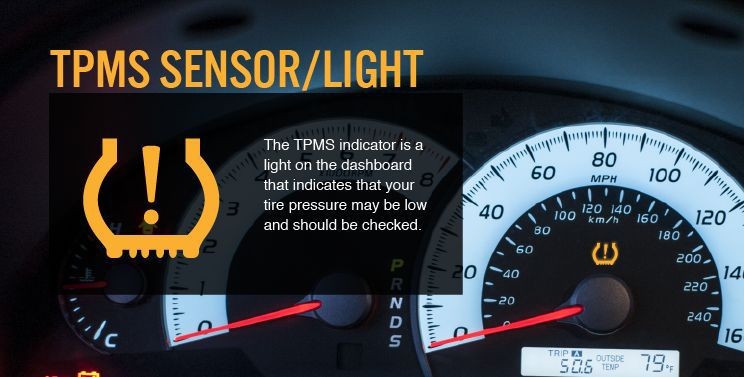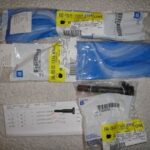Tire Pressure Monitoring Systems (TPMS) are crucial for vehicle safety, alerting drivers to significantly under-inflated tires that can lead to dangerous driving conditions. A yellow dashboard warning light, shaped like a tire cross-section with an exclamation point, indicates low tire pressure. This light’s presence signifies a history of accidents attributed to underinflation and the subsequent legislation mandating TPMS in most vehicles sold in the United States since 2007.
 TPMS Symbol Image
TPMS Symbol Image
While TPMS technology helps prevent accidents by ensuring proper tire maintenance, not all systems function identically. Two primary types exist: indirect TPMS and direct TPMS, each with unique operating mechanisms and benefits. Understanding these differences is key to proper tire care and maintenance.
Indirect TPMS: How it Works
Indirect TPMS utilizes wheel speed sensors, primarily employed by the anti-lock braking system (ABS). These sensors monitor each wheel’s rotational speed. The onboard computer compares these speeds against each other and other vehicle data like overall speed.
By analyzing rotational data, the system indirectly infers tire pressure. A faster-than-expected spin suggests underinflation, triggering the warning light. This method doesn’t directly measure pressure like a tire gauge; it interprets variations in wheel rotation.
Advantages of Indirect TPMS:
- Lower cost compared to direct TPMS.
- Reduced programming and maintenance requirements.
- Simpler installation.
Disadvantages of Indirect TPMS:
- Inaccurate readings possible with new tire sizes or uneven wear.
- Requires resetting after inflation and tire rotation.
Direct TPMS: How it Works
Direct TPMS employs pressure sensors located within each tire, directly measuring pressure and often temperature. These sensors transmit data wirelessly to a central control module. The module analyzes the data and activates the dashboard warning light if pressure falls below the recommended level. Each sensor has a unique serial number, allowing the system to monitor individual tires and differentiate between vehicles.
Advantages of Direct TPMS:
- Provides precise tire pressure readings.
- Unaffected by tire rotations or replacements.
- Easy resynchronization after tire service.
- Long-lasting sensor batteries (approximately 10 years).
- Often included in spare tires.
Disadvantages of Direct TPMS:
- Higher cost than indirect TPMS.
- Resynchronization may require specialized tools.
- Non-serviceable batteries; entire sensor replacement needed if battery fails.
- Proprietary technology can complicate service and replacement.
- Sensors vulnerable to damage during tire mounting/demounting.
TPMS Sensor Importance and Tire Safety
Both indirect and direct TPMS ultimately serve the same purpose: to alert drivers to potentially unsafe tire pressure. While TPMS offers valuable safety information, regular manual pressure checks remain essential. Consider TPMS as a supplemental tool, not a replacement for routine tire maintenance. A properly functioning Tpms Sensor, whether part of a direct or indirect system, contributes significantly to overall vehicle safety.
Conclusion: The Role of the TPMS Sensor
The TPMS sensor, regardless of the specific system it belongs to, plays a vital role in maintaining safe tire pressure. By understanding how these systems work and their respective advantages and disadvantages, drivers can make informed decisions regarding tire maintenance and ensure optimal vehicle safety. Regular maintenance and attention to the TPMS warning light are essential for safe and efficient driving.

